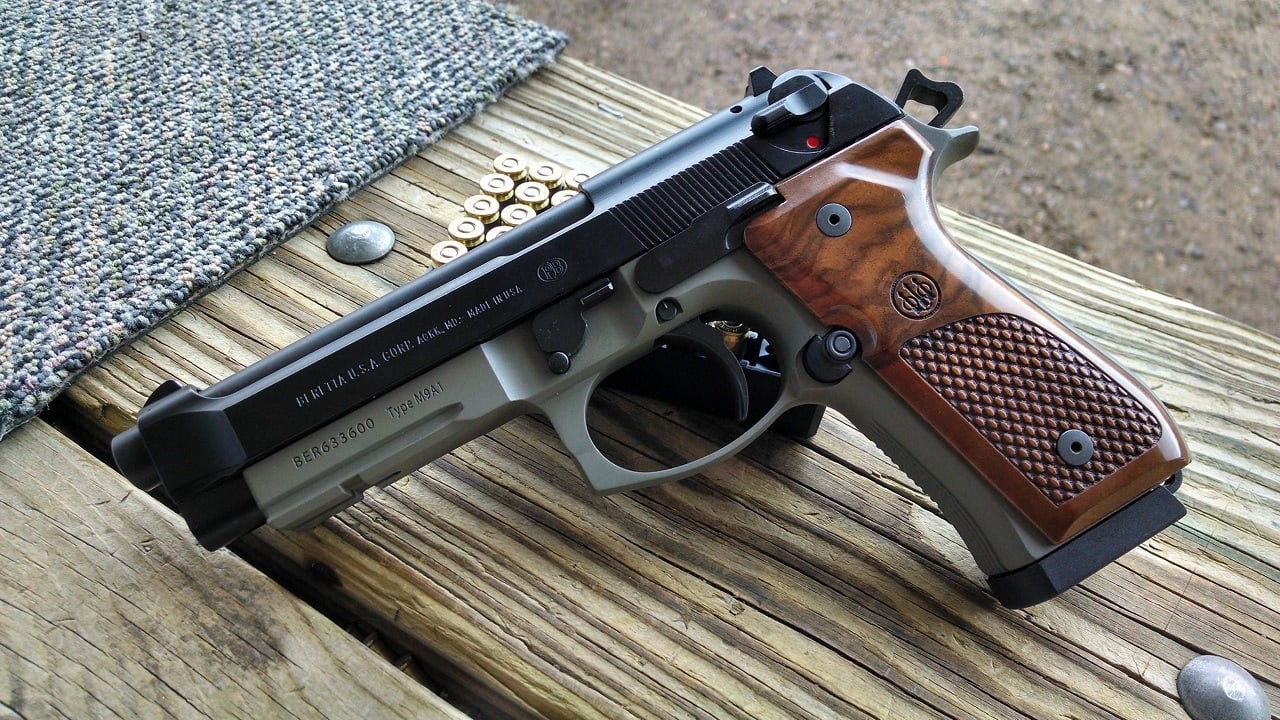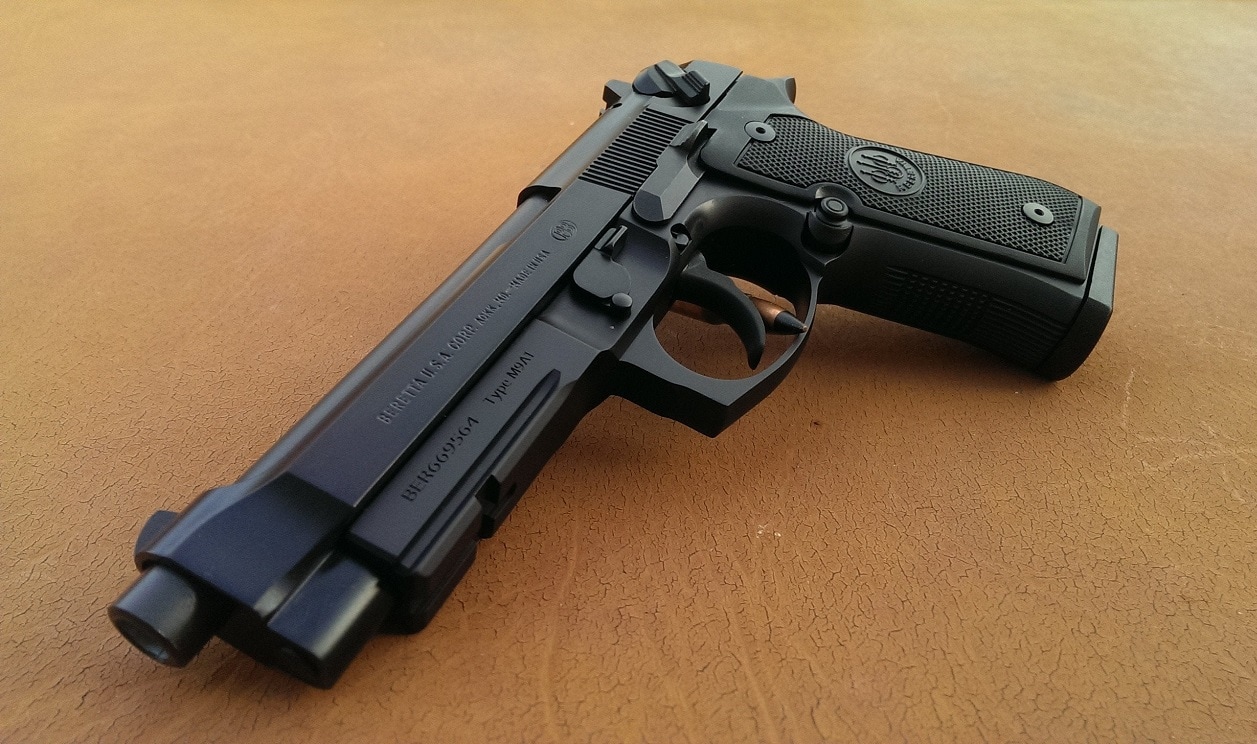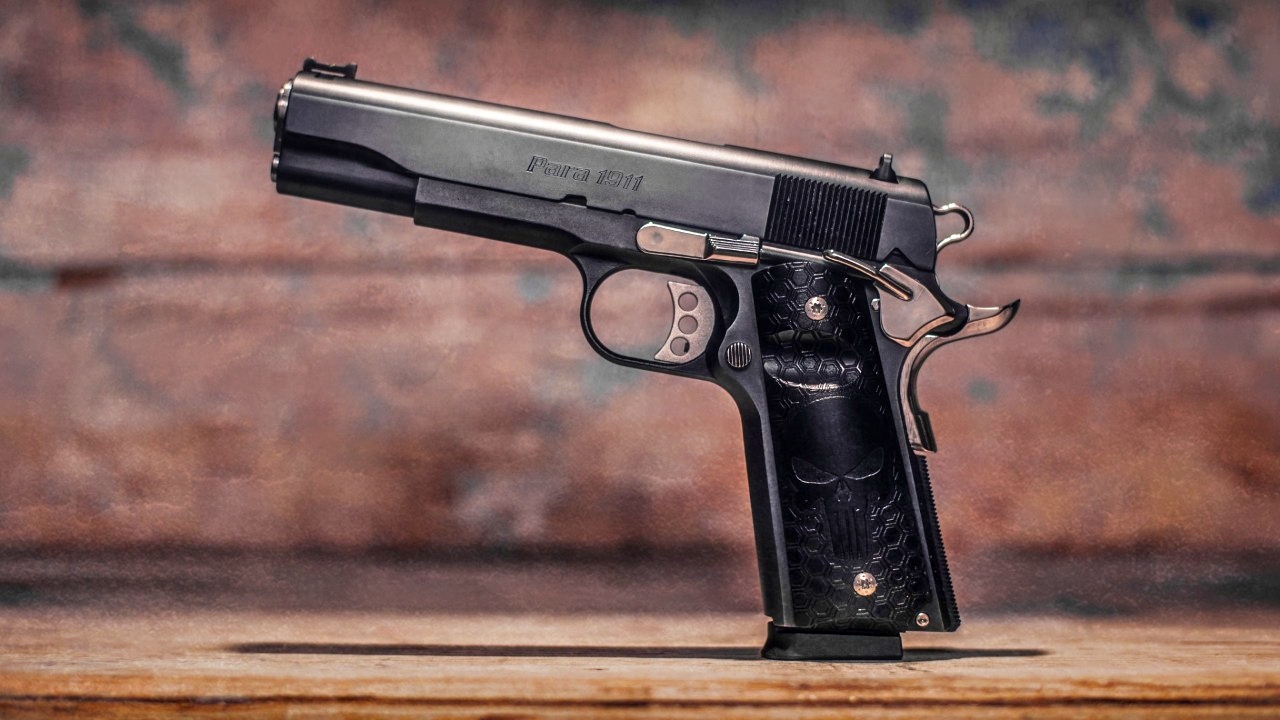Key Points and Summary – We present a historically informed list that ranks the top five sidearms in U.S. Army history.
-The iconic M1911 .45 ACP takes the top spot for its power, reliability, and 75 years of service.
-Its successor, the Beretta M9, comes second for its 33-year tenure and proven combat record.

Beretta M9. Image Credit: Creative Commons.
-The SIG M11 (P228) earns third place for its long service with Army CID and reputation for reliability.
-Fourth is the legendary Colt Single Action Army “Peacemaker,” the famed cavalry revolver.
-Tied for fifth are the Colt and Smith & Wesson M1917 .45 ACP revolvers, crucial stopgaps during World War I.
The Top 5 U.S. Army Sidearms of All Time, Ranked by an Expert
In its proud 250-year history, the United States Army has wielded many a sidearm. But what are the Top 5 US Army sidearms?
This reporter has compiled a list that is admittedly subjective but also backed by 36 years of hands-on shooting experience and factual historical research.
#1: M1911/M1911-A1 .45 ACP
Well, this one sounds like a no-brainer, right?
Besides grabbing the top spot on this list, it’s also one of the three most enduring inventions of the legendary gunmaker John Moses Browning. After passing a 6,000-round torture test, it became the first semiautomatic pistol to be adopted by the US Armed Forces, as well as the most powerful sidearm ever to become standard issue to a nation’s military.
Colt was the original and most famous company to manufacture the pistol, but it would soon end up being built by more companies than you can shake a stick at.
It served faithfully for nearly 75 years. Even though the M1911 was officially replaced in that role by the next gun on the list, it remains wildly popular with gun enthusiasts to this day, an incredible 114 years after its invention. I can certainly see why; I’m quite fond of both my Springfield Armory M1911-A1 Mil-Spec and my genuine WWI-vintage Colt.
#2: Beretta 92FS/M9 9mm
As previously indicated, this was the pistol that had the daunting task that of succeeding the M1911 as the official sidearm of the US military, and in 1985 the Beretta 92F/M9 did precisely that, in turn ably fulfilling the role for 33 years—seeing combat in Panama, Iraq, and Afghanistan along the way—before giving way to the SIG M17/M18/P320.
This pistol gained further credibility after being adopted by the LAPD and the LA Sheriff’s Department, as well as numerous other domestic law enforcement agencies. In retrospect, that’s not surprising in light of the fact that Beretta is the world’s oldest industrial firm of any kind, dating back to 1526, so you can rest assured they know what they’re doing.

Beretta M9. Image Credit: Creative Commons.

Beretta M9. Image Credit: Creative Commons.
Moreover, two renowned firearms industry experts who are both known as hardcore M1911 aficionados, Ken Hackathorn and gunsmith Bill Wilson, have gone on record lavishing praise on the Beretta, with the former deeming it “the most reliable handgun I ever used” and the latter stating that “I shoot it just as well as the 1911.”
The Beretta 92 is my sentimental favorite; indeed, it was the very first pistol I fell in love with back at the tender age of 14.
#3: SIG Sauer M11/P228
Yes, you read that correctly, the SIG M11/P228. *not* the M17/M18/P320 that has turned out to be more of a liability than an asset.
Unlike the striker-fired P320, the traditional double-action (TDA) P228 has a solid reputation for safety, durability, and reliability. Though it was never an Army-wide general issue pistol, it did spend roughly two-and-a-half decades as the sidearm for Special Agents of the Army’s Criminal Investigation Division (CID).
As Eric R. Poole elaborates in an August 19, 2016, article for Guns & Ammo Magazine: “Shortly after the M9 was selected, the need for a compact service auto was identified, and the Compact Pistol Program (CPP) was initiated.
The intent was to find a pistol that was lighter and more easily concealed than the M9, and it was expected that this new pistol would replace the variety of small handguns in use by the investigative branches of the Army, Navy and Air Force … As a result of the test performed at Aberdeen Proving Ground (APG) in Maryland, the SIG Sauer P228 became the M11 First Article Test (FAT) pistol.
Testing commenced on December 6, 1991, and was completed on April 30, 1992. During the Army’s reliability tests conducted at APG in January 1992, only a single malfunction was experienced in 15,000 rounds among three P228s submitted for testing.”
#4: Colt Single Action Army (SAA) AKA The “Peacemaker” .45 Colt (“.45 Long Colt”)
One good Colt .45 deserves another.
This time, we’re talking about a revolver that preceded the 1911 autopistol by 38 years. Officially, the Colt SAA served as the US Army sidearm from 1873 to 1892, most famously at Custer’s Last Stand. Unofficially, the gun stuck around much longer than that, seeing action during the Spanish-American War, and was further immortalized by George Patton’s flamboyant ivory-handled specimen, which he first wielded in combat during the Pancho Villa Expedition of 1916.
The Peacemaker employed the .45 Colt cartridge (unofficially termed the “.45 Long Colt;” not to be confused with the .45 ACP [Automatic Colt Pistol]), which, as noted by the late firearms historian Mike “Duke” Venturino, “was intended not only to knock down human adversaries but also for putting their horses out of commission.”
#5 (Tie): Colt M1917 and Smith & Wesson M1917 .45 ACP
Though the M1911 mentioned above is justifiably remembered as the primary sidearm that helped the “doughboys” win WWI, it wasn’t the only handgun to fulfill that role. When the US first entered the so-called “Great War,” AKA “The War to End All Wars,” there wasn’t a sufficient existing stock of automatic pistols to fill the GI holsters.
This is where the Smith & Wesson Model 1917 and Colt M1917 .45 ACP double-action (DA) revolvers came in as a stopgap measure. (Yes, yet another Colt .45.)
As Tom Osborne (not to be confused with the legendary Nebraska Cornhuskers football coach) wrote in Smith & Wessons of the Great War (in turn cited in a 2011 Gun Digest article), “Smith & Wesson’s Model 1917 revolver can perhaps best be described as an expedient that actually worked.” S&W produced a total of 153,300 of these wheelguns.
Not to be outdone, Colt churned out an updated version – to accommodate the .45 ACP cartridge, that is – of their already-extant (since 1899) New Service revolver.
Colt furnished more than 150,000 to the U.S. Government between October 1917 and December 1918.
About the Author: Christian D. Orr, Defense Expert
Christian D. Orr is a Senior Defense Editor. He has 36 years of shooting experience, starting at the tender age of 14. His marksmanship accomplishments include: the Air Force Small Arms Ribbon w/one device (for M16A2 rifle and M9 pistol); Pistol Expert Ratings from U.S. Customs & Border Protection (CBP), Immigration & Customs Enforcement (ICE), and the Federal Law Enforcement Training Center (FLETC) Criminal Investigator Training Program (CITP); multiple medals and trophies via the Glock Sport Shooting Foundation (GSSF) and the Nevada Police & Fires Games (NPAF). Chris has been an NRA Certified Basic Pistol Instructor since 2011. He is also the author of the newly published book “Five Decades of a Fabulous Firearm: Celebrating the 50th Anniversary of the Beretta 92 Pistol Series.”
More Military
China’s New Aircraft Carrier Has 1 Big Advantage over the U.S. Navy
The B-21 Raider Stealth Bomber Has a New Problem: The Government Shutdown
The B-1B Lancer Bomber Has a Message for the Air Force
The B-2 Spirit Bomber Has 1 Big Advantage over Russia and China
Nuclear Aircraft Carrier USS Nimitz Will Be Retired Next Year: It Might Be a Big Mistake










